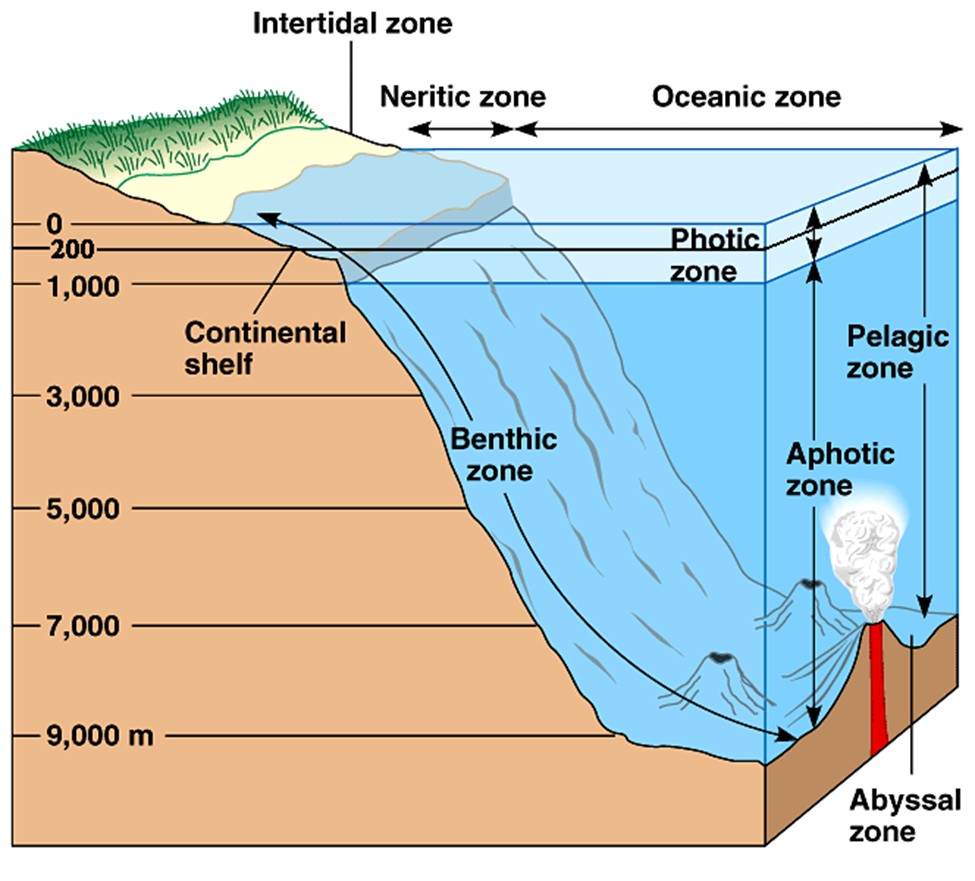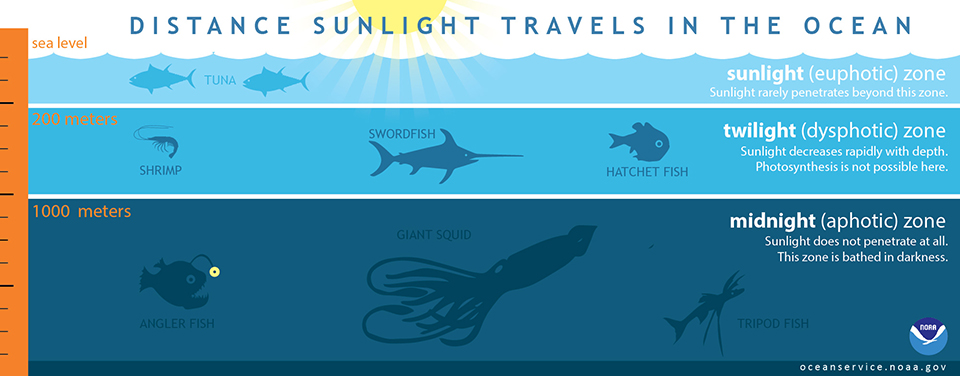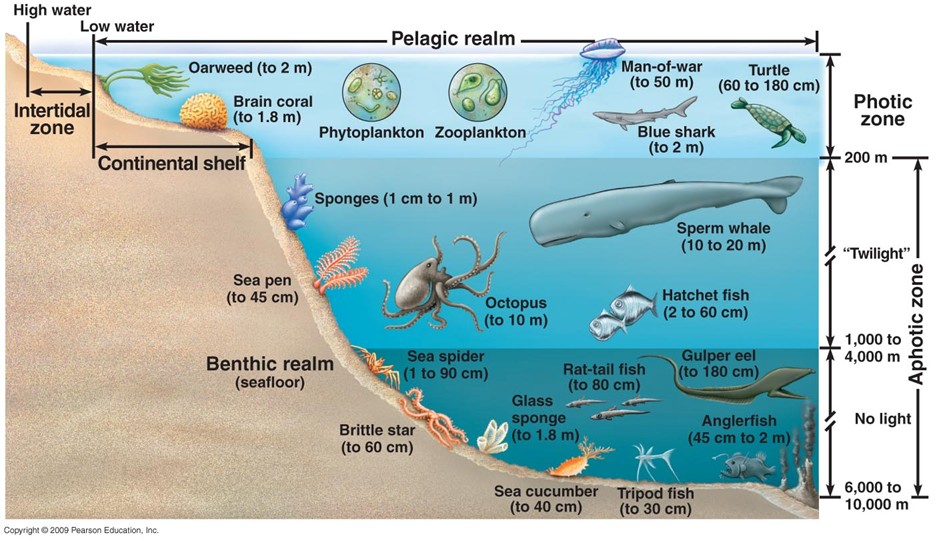Ocean Zones
- The oceans can be divided into two basic regions:
- Pelagic Zone (anywhere in the water column)
- Benthic Zone (anywhere on the seafloor)
- Intertidal Zone
- Area between high tide and low tide
- Creatures that live here:
- Crabs, Sea Stars, Sea Urchins, Clams, Oysters, Octopuses, Some Fish and Zooplankton
- Neritic Zone
- Area on top of the continental shelf between the intertidal and oceanic zones
- Constantly covered by water with access to sun during the day
- Ecosystems:
- Coral Reefs, Kelp Forests
- Oceanic Zones
- The Open Ocean
- Everything from the Neritic Zone outward
- Photic Zone (Sunlight Zone)
- Top 200 meters of the ocean
- Remember: photo = light
- Contains ALL plants and most animals (90%)
- Plants only grow where the sun can reach (in the top 200m of water).
- All food for the deep zones drifts down from the photic zone.
- Aphotic Zones
- Without light; Below 200 meters.
- The only light here is from creatures with bioluminescence.
- Bioluminescence = chemical reactions that cause an animal to emit light
- The Order of the Pelagic Zones
- Epipelagic (sunlight) 0-200 m
- Mesopelagic (twilight) 200-1,000 m
- Bathypelagic (midnight) 1,000-4,000 m
- Abyssopelagic (abyss) 4,000-6,000 m
- Hadalpelagic (trenches) 6,000+ m
- "Remembah the Embah"
- Hydrothermal Vents
- Hydrothermal vents are places underwater where hot water and chemicals are released into the ocean.
- Chemosynthetic bacteria turn the chemicals into energy.
- A whole ecosystem is built on these bacteria.
- Bacteria - shrimp - fish - squid - whales
- This unique ecosystem isn’t powered by the sun.
- Benthic Zone
- Lowest Level (bottom floor) of the ocean
- Extends from the intertidal zone through to the hadal.
- Organisms include:
- Worms, Crabs, Sea stars
- Benthic Ooze (aka: Marine ‘snow’)
- A shower of detritus falling from the upper waters to the deep ocean
- Detritus = dead organic material
- Ex: Dead/decaying organisms
- Food scraps
- Phytoplankton (plants)
- Shells and skeletons
- Ocean Exploration Technology
- Submarines allow for a small number of people to travel underwater.
- ROVs (Remotely Operated Vehicles) are the most common method for exploring the deep ocean. They are piloted from the surface.
Project
3D Ocean Floor Model
Create a 3D model of the ocean floor following the steps given in class. Label each section on the front and include details on the back. Cut out the shapes, then fold down a small ledge around the notes on each one, taping the corners into place. For added clarity, it is recommended you color the fronts so it's easier to identify which parts go where inside the base.




